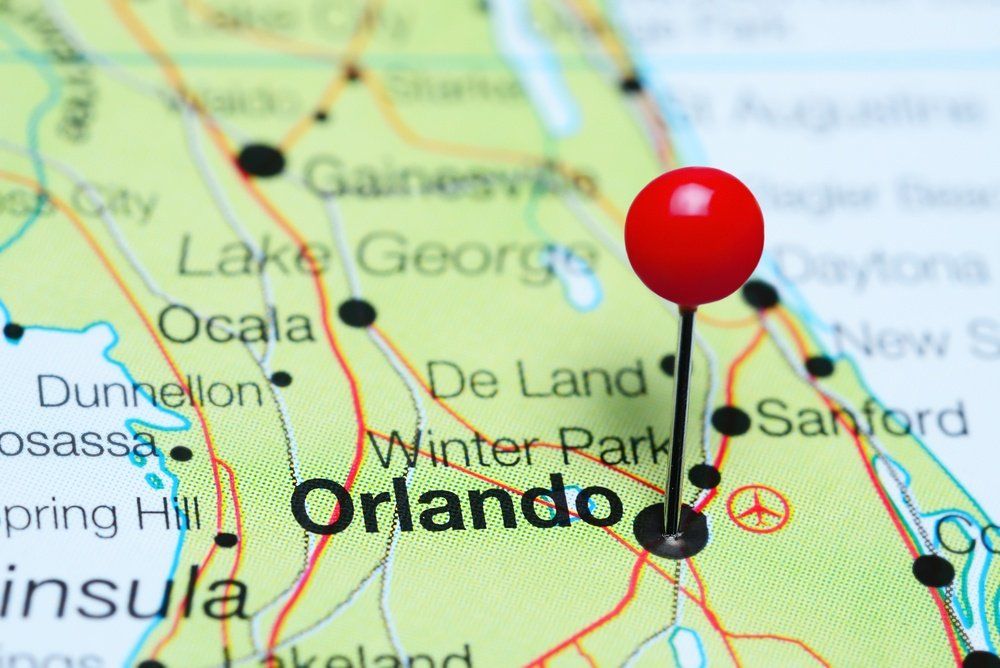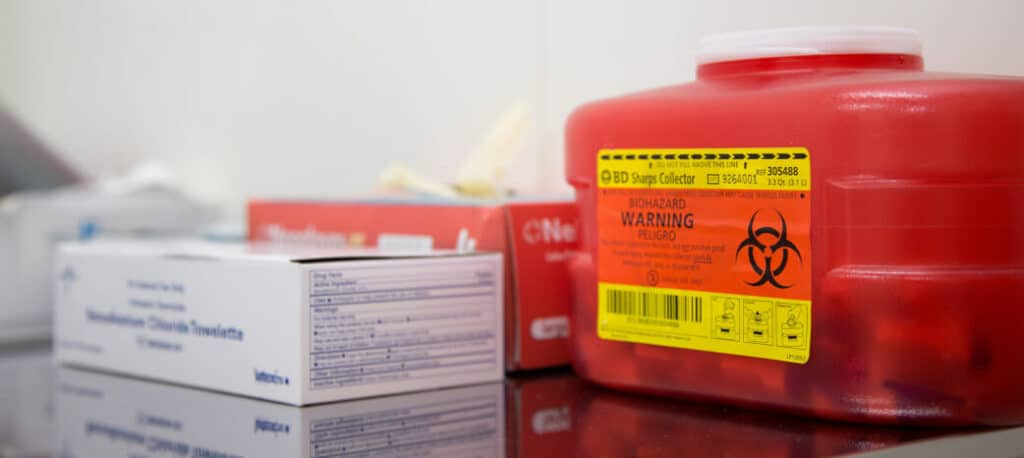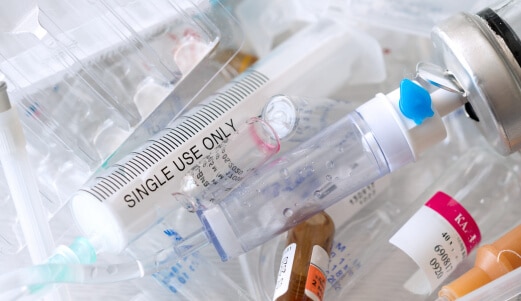
Pharmaceutical & Medical Waste Disposal Florida
Annual Savings offered by MedPro Disposal in Florida
See below for some of our Florida quotes, saving Florida Practices thousands of dollars.
The MedPro Disposal Difference
Safe medical waste disposal has never been so simple and affordable. How do we keep our prices so low? By charging only for the services you need and keeping our operating costs low to pass along the savings.
Every practice is different, and we tailor a custom solution that fits your needs and budget, from our pick-up schedule to the right kinds of biohazard and sharps containers.
Find out how much you can save instantly. Try our online savings calculator.
Florida Locations Serviced
We offer biohazard and medical waste disposal services throughout Florida, including:
It’s Easy to Get Started With MedPro Disposal

Contact Us
Contact MedPro Disposal for a fast, free medical waste removal quote. We’ll get to know you, discuss your needs, and settle on a number. You may be surprised at how much you can save on medical waste disposal with MedPro Disposal.

Waste Pickup Date
Work with MedPro Disposal to determine your first pickup date. We’ll confirm your office hours and provide convenient options for medical waste and sharps pickup.

Compliance Survey
Complete a compliance survey. After we get to know your requirements, we’ll send you a survey to identify any areas that need to be brought up to OSHA standards.
All three steps occur at no additional cost to your practice. You’re on your way to safe, affordable, compliant medical waste removal!
Contact MedPro Disposal Today for a Fast, Free Quote!
Florida Medical Waste Savings
| Practice Type | Zip Code | Projected Annual Savings |
|---|---|---|
| Family Practice | 33432 | $2,484 |
| Veterinary | 33428 | $7,200 |
| Podiatry | 33431 | $600 |
| Orthopedics | 33428 | $1,337 |
| Dermatology | 34209 | $3,608 |
| Orthodontics | 34243 | $720 |
Find Out How Much You Can Save Instantly
Try our on-line savings calculator.


Florida is the 22nd largest state in the United States, however, it is the 3rd most populous. It has the longest coastline in the contiguous United States, at approximately 1,350 miles, and is the only state to border both the Gulf of Mexico and the Atlantic Ocean. Juan Ponce de Leon, a Spanish explorer, was the first European to make contact with Florida in 1513. Since then, it was the principal location of the Seminole Wars against the Native Americans, and a state divided by racial segregation following the American Civil War. In modern times, Florida is known for its large Cuban expatriate community and rapid population growth.
With such a large population, the hospitals located throughout Florida have a lot of patients that come and go, relying on the centers to nurse them back to health. While this is a great thing, with all that care comes by-products. More specifically, medical waste. Medical waste is unique in the fact that it cannot simply be placed into a standard waste bucket, as that causes concern for the health of Florida’s residents and extensive ecosystem.
Medical waste can be a variety of things, including, but not limited to: IV bags, used sharps, gauze pads, soaked bandages and even human tissue. When these items are used on a patient, they immediately need to be placed into the respective medical waste container, in order to minimize the spread of blood-borne pathogens. Blood-borne pathogens are very dangerous and have the ability to spread harmful diseases if an unprotected individual were to come in contact with them. In 2011, over 17 million cases of infection were reported in hospitals due to the contamination of sterile environments, according to the CDC. MedPro Disposal is dedicated to reducing that number and keeping the residents, along with the environment in good health.
As a MedPro customer, the hassle associated with determining what waste can go in the normal trash stream and what needs to go in the medical waste container is eliminated. We will send your facility a poster that can be placed next to the medical waste container, and it clearly outlines what products need to be disposed of in that bin, and what products are safe to dispose of in the normal waste bucket.
While we are known nationwide for being a premier choice of healthcare facilities to service their medical waste disposal needs, we also offer other services and products to businesses in Florida. One of our very popular services that is typically bundled with medical waste removal, is our pharmaceutical disposal program, which is designed with simplicity in mind. MedPro will send your facility a 2.5 gallon bucket that is used to discard unused or expired medications in. When your facility fills this bucket to capacity, simply attach the included pre-paid shipping label, and send it off to our disposal facility. Your location is then supplied with a brand new bucket, ready to begin collecting medications. A nice feature of this service is that it is only a one-time fee per bucket, whether it takes your facility 1 week or 1 year to fill.
Along with the previously mentioned services, MedPro Disposal is also proud to offer our online OSHA compliance portal to our Florida clients. This online portal allows administrator access to assign job-specific tasks to either individual employees, or assigned as group training, whichever is preferred. The online program stores all certificates of completion in one, centralized location, making it very easy to access and review, should the need ever arise. This program eliminates costly outside consulting, which usually requires shutting down for half a day to train all employees. This is lost time and revenue: bad news for the bottom line.
With the cost of living increasing nationwide, Florida included, anything that can be done to save costs is crucial to the survival of a business. Our current customers in Florida are consistently seeing savings in the 20-40% range, compared to their previous waste haulers. That’s money that can be reinvested into better patient care, increasing the satisfaction of your customers.
About Florida:
Florida was the first area of the continental United States to be settled by Europeans. They introduced Christianity, cattle, horses, sheep and much more to Florida. Over time, Florida eventually became a burden to Spain, who could not afford to send settlers and patrols. On March 3rd, 1821, President James Monroe took possession of East and West Florida for the United States. In 1822, the two sides were merged into the Florida Territory.
In the early 20th century, Florida’s economy was based primarily on agriculture, such as cattle farming, sugarcane, citrus, tomatoes, and strawberries.
Substantial economic growth in the 1920s stimulated tourism in Florida and the subsequent development of hotels and resort communities. However, devastating hurricanes in the second half of the decade, followed by the Great Depression, brought that growth to a screeching halt. It did not rebound until the buildup for World War II.
Currently, tourism makes up one of the largest sectors of the state economy. 1.2 million people are employed in the tourism industry in the state of Florida, and in 2015, Florida hosted a record 105 million visitors, breaking the 100-million visitor mark for the first time in state history.
Florida EPA State Definitions
Classifications of Waste
Biomedical waste is any solid or liquid waste which may present a threat of infection to humans, including non-liquid tissue, body parts, blood, blood products, and body fluids from humans and other primates; laboratory and veterinary wastes which contain human disease-causing agents; and discarded sharps.
Types of Wastes
Used, adsorbent materials saturated with blood, blood products, body fluids or excretions of secretions contaminated with visible blood; and absorbent materials saturated with blood or blood products that have dried. -Non-absorbent, disposable devices that have been contaminated but have not been treated by an approved method.
Storage Requirements
Storage of biomedical waste at the generating facility shall not exceed 30 days. The 30 day period shall commence when the first non-sharps item of biomedical waste is placed into a red bag or sharps container, or when a sharps container containing only sharps is sealed.
Florida State Resources
Florida Department of Health Biomedical Waste Program

4052 Bald Cypress Way Bin A-08 Tallahassee, FL 32399

Florida Department of Environmental Protection

3900 Commonwealth Boulevard M.S. 49 Tallahassee, FL 32399

Florida Department of State Administrative Code and Register

R.A. Gray Building 500 South Bronough Street Tallahassee, FL 32399-0250

Florida Online Safety Compliance Portal
We strive to provide you services in Florida that will save you money! Part of this process is to make sure you are not paying for more than you generate.
We understand the importance of saving your money without sacrificing service. MedPro will be your partner in your medical waste management program by being a low-cost provider of medical waste disposal and OSHA training services.
Have questions about compliant biohazard waste and sharps waste disposal best practices?
Why Choose MedPro Disposal for Medical Waste & Sharps Container Disposal in Florida?
Methods of Florida Medical Waste Disposal
On-site Medical Waste Collection
Package medical waste on-site, then leave it for collection by a medical waste disposal company.
Mailback Waste Disposal
Properly package and label the sharps, then send the biohazardous waste safely through the mail for disposal.






